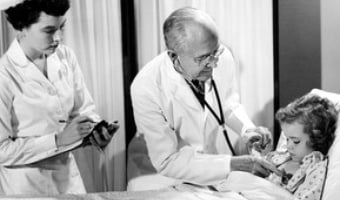Scientists have feared this day would come ever since Alexander Fleming discovered penicillin in 1928. Accepting his Nobel prize, Fleming warned that bacteria could evolve to beat antibiotics. Recent years have seen repeated bouts of hand-wringing. But according to a report by the World Health Organisation (WHO) published on April 30th, Fleming’s fear is at last becoming reality.
The problem is global and affects common infections and many antibiotics. In China standard drugs are now ineffective over a third of the time against a bacterium that can cause severe lung infections. In America a standard antibiotic for treating infected wounds fails to work over half of the time in hospitals. A commonly-used treatment for UTIs is now often ineffective in Cuba. Doctors are increasingly turning to what were once treatments of last resort. But bacteria are cracking these, too.
Antibiotic resistance could set medicine back a century, to a time when infections often led to amputations, says Carmem Pessoa da Silva, a doctor involved with the WHO report. Procedures such as heart surgery and organ transplantation, and the treatment of some cancers, would be far riskier without effective antibiotics. And the problem is already costing lives and money. At least 2m Americans are thought to suffer antibiotic-resistant infections each year, leading to some 23,000 deaths directly and many more from complications to other illnesses.
A fast rate of reproduction, and the ability to pass genes among themselves, mean bacteria evolve quickly. Misuse of antibiotics is speeding things up further. Patients often fail to take their full treatment course. That makes it less likely that their infections are completely cleared, which leaves alive the bacteria with greater resistance. As these bacteria breed, resistance gradually spreads. Overuse of antibiotics—patients taking them for illnesses where they are ineffective, and farmers feeding them to animals to promote growth—increases the pool of resistant bacteria even more.
A recent move to cut farmers’ use of antibiotics in America, where as much as four-fifths of all antibiotics (by weight) are fed to animals, should help—though exempting use for veterinary purposes leaves a loophole. And member states are expected to ask the WHO to develop a global plan to tackle antibiotic resistance at its annual meeting in May. If such a plan is to work, it will have to monitor health systems in developing countries, where antibiotics are also commonly misused. Better dispensing guidelines and diagnostic tools would also help, as would the greater use of some vaccines (preventing flu, for example, can cut the number of cases of pneumonia). Cleaner hospitals and better public sanitation are even more important: in defeating tuberculosis in western Europe, hygiene played a bigger role than drugs.
But as health officials struggle to keep old drugs working, the pipeline of new ones is running dry. No new class of antibiotics has been discovered since 1987. This is partly because research has failed to make breakthroughs, but also because pharmaceutical firms have had little incentive to seek new treatments as long as the old ones were effective. Joint public-private efforts in America and Europe, while promising, will take time to bear fruit. In the meantime, antibiotics are failing more often and medicine is moving backwards.
Source: Economist.com, 03-05-2014.

